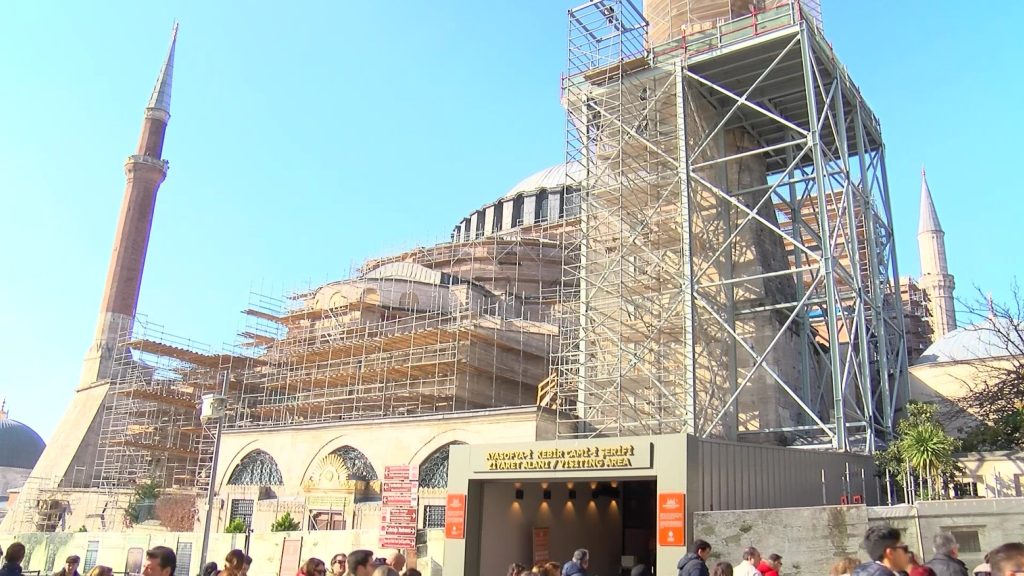The second phase of restoration work at Hagia Sophia Grand Mosque has begun, focusing on vital repairs to the 2nd Bayezid Minaret. The extensive restoration project, launched under the guidance of the Directorate General of Foundations, aims to preserve the iconic structure and ensure its longevity for future generations.
The restoration efforts include dismantling and reinforcing parts of the second Bayezid Minaret. One significant aspect of the work involved removing the decorative balcony (şerefe) section of the minaret. This was done to assess the underlying structure and carry out necessary repairs.
Associate professor Ahmet Güleç, a member of the scientific committee overseeing the restoration, shared his insights on the ongoing work, saying, “The balcony section was carefully removed, and we descended to inspect the minaret’s core. Typically, minarets are constructed using tenons to maintain their structural integrity, but we observed a unique construction technique here. Instead of tenons, both internal and external clamps were used to form rings, eliminating the need for traditional tenons.”
Professor Güleç further explained the challenges encountered during the restoration process. “The upper section of the minaret had been previously repaired using cement-based materials, which caused noticeable damage over time. These materials have been removed to prevent further deterioration, and the necessary reinforcements are now being made.”
In addition to the minaret repairs, restoration work on the exterior c of Hagia Sophia is also in progress. Special scaffolding made from steel pipes has been erected to safely carry out the restoration, while mesh coverings have been installed for protection during the work. The restoration is being carried out to address structural issues that were discovered during an in-depth analysis of the building’s materials.
“We have already completed some minor repairs to the interior, particularly on the marble surfaces and flooring, the focus now is on reinforcing the structure to ensure it can withstand seismic activity,” said Güleç.
He explained that the restoration efforts are being conducted with an emphasis on minimal intervention to preserve the original structure. “Our priority is to remove problematic materials that could harm the building, and we aim to replace them with historically accurate and durable materials.”
A key element of the restoration is the careful cleaning of the building’s facade. “We’ve carried out analyses on the mortar and plaster used in the building and will perform controlled sandblasting on the stone sections that require cleaning. The goal is to ensure that the cleaning process is done at low pressure to avoid damaging the surface, while still effectively removing dirt and grime,” Güleç added.
This phase of the restoration also includes the analysis of various materials, such as the mortar and stone used in the building, to determine the most appropriate methods for their preservation.
Güleç emphasized that the restoration team is working meticulously to respect the building’s historical integrity, saying, “We have begun conducting a detailed period analysis based on mortar samples to understand the different phases of restoration that Hagia Sophia has undergone.”
One of the challenges of this restoration, Güleç explained, is the protection of Hagia Sophia from weather-related damage. “Given the harsh weather conditions, including strong winds and heavy rain, we are taking additional measures to safeguard the building. In particular, we will be using a specific type of plaster to protect the upper sections of the structure, allowing it to breathe while ensuring long-term protection against the elements.”


